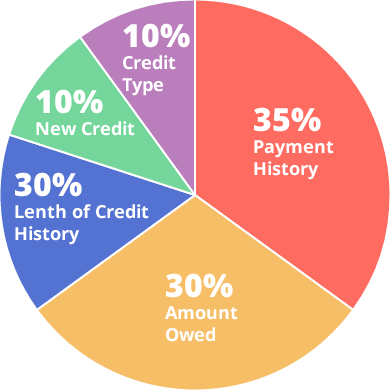Your credit score is a numerical representation of your statistical likelihood to repay credit that is extended to you. Mortgage Scores range from 300-850. Your score is a “snapshot” of a specific moment and can change with new actions and the passage of time.
FICO Scores are calculated from different data that can be grouped into five categories as outlined below. The percentages in the chart reflect how important each of the categories is in determining your FICO score.

35% Payment History
Do you pay your credit on time?
Length of positive credit history
Severity of quantity of delinquencies
30% Amount Owed
Too many credit cards with balances can lower your credit score
15% Length of Credit History
The longer the history, the better.
How long have your credit accounts been established?
How long has it been since you used certain accounts?
10% New Credit
Research shows that opening several credit accounts in a short period of time does represent greater risk — especially for people who do not have a long established credit history.
10% Type of Credit in Use (Healthy Mix)
2 installment loans
3 revolving accounts with balances
Balances on revolving debt below 30% of the high credit
Following items have negative effects on your credit score
Collection Accounts
Public Records
Foreclosures
Late Payments